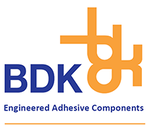A medical device is defined as any instrument, apparatus, appliance, software, material or other article that is intended for human use for medical purpose. This could be diagnosing, monitoring or treating a medical condition. In the UK market, the classification of medical devices falls under UK Medical Device Regulations. Here are the medical device classes explained further, including examples.
Medical Device Classes Explained
Medical devices, as well as software that is used to aid the operation of a particular device are classified into one of the four categories below. If the device is intended to be used in combination with another, the classification rules apply to each device separately.
- Class I
- Class IIa
- Class IIb
- Class III
Class I
Class I medical devices pose the lowest risk of serious injury or serious deterioration to the patient’s health. They do not penetrate inside the body, so are considered non-invasive devices. Examples include bandages and dressings, spectacle frames, wheelchair, surgical masks, stethoscopes, etc.
Class IIa
Class IIa medical devices also pose a low risk and are considered non-invasive as they are intended for channelling or storing blood, body liquids or tissues, liquids or gases for the purpose of eventual infusion, administration or introduction into the body. Examples include suture needles, surgical clamps, hearing aids, contact lenses, TENS devices, etc.
Class IIb
Class IIb medical devices pose a medium to high risk and must be certified by a Notified Body before they can be placed on the UK market. They are also considered as non-invasive devices that are intended for modifying the biological or chemical composition of blood, other body liquids or other liquids intended for infusion into the body. Examples include infusion pumps, surgical lasers, ventilators, diagnostic x-rays, condoms, etc.
Class III
Class III medical devices pose the highest risk, so undergo the strictest level of analysis and require clinical evidence to support their approval; a conformity certificate must be issued by a Notified Body to be placed on the UK market. They are considered as both short-term and long-term invasive devices that are intended to control, diagnose, monitor or correct a defect of the central circulatory system or central nervous system. They are also intended to have a biological effect, be absorbed or to undergo chemical change in the body. Examples include pacemaker, cochlear implants, defibrillator, heart valves, breast implants, joint replacement systems, etc.
In addition to invasive and non-invasive medical device categories, there are two other categories to consider: active and special. The regulations according to these classifications can be found under Rule 9 – 18 mentioned in Annex IX of Directive 93/42.
If the medical device is not explicitly designed for a particular part of the body, it should be classified based on its most critical use. Plus, if there are multiple rules that apply to the medical device, the highest risk must be considered for classification purposes.
Compliance is paramount for the healthcare industry and, at BDK, we are committed to maintaining the highest standards when it comes to medical device regulations. Whilst we present the medical devices explained, we understand it’s a complex subject which is why we’re here to help. Contact us to speak about your project today.
